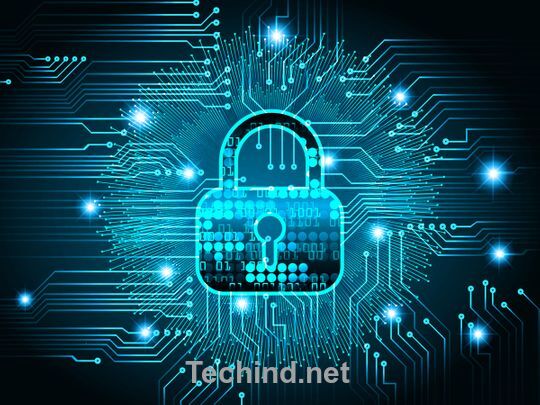
Cyber Security is the practice of protecting computer systems, networks, and sensitive information from unauthorized access, theft, damage, or any other malicious activity. It involves the use of various technologies, processes, and practices to secure devices, networks, and data from cyber threats such as hacking, phishing, malware, and other cyberattacks.
The importance of cybersecurity has grown exponentially with the increasing dependence on technology and the rise in cybercrime. Effective cybersecurity measures are essential for individuals, organizations, and governments to protect their assets, maintain privacy, and prevent financial losses or reputational damage caused by cyber incidents.
Importance of Cyber Security
Cyber security is a crucial aspect of modern-day technology-driven world. With the rise of technology, the number of cyber threats has also increased, making it imperative for individuals and organizations to take necessary measures to protect themselves against malicious attacks.
One of the main reasons why cyber security is important is because of the sensitive information that is stored and transmitted online. This includes personal data, financial information, and confidential business information. Cyber attackers can easily steal this information if proper security measures are not in place.
Another reason why cyber security is important is to prevent cyber attacks that can cause damage to systems and networks. Cyber attacks can disrupt normal operations, cause financial losses, and damage the reputation of an organization.
Furthermore, cyber security is important to ensure the safety of individuals and communities. With the increasing use of technology in critical infrastructure such as healthcare, transportation, and energy, the risk of cyber attacks on these systems can have serious consequences on public safety.
Types of Cyber Threats
Cyber threats are malicious activities that occur in the digital world. These activities can cause harm to individuals, organizations, and governments. There are several types of cyber threats that you should be aware of:
- Malware: Malware is a type of software that is designed to damage or disrupt computer systems. Malware can include viruses, Trojans, and ransomware.
- Phishing: Phishing is a type of cyber attack where attackers try to trick individuals into revealing sensitive information such as login credentials, credit card numbers, and social security numbers.
- Distributed Denial of Service (DDoS): A DDoS attack is where attackers flood a server or network with a large amount of traffic, causing it to crash or become unavailable.
- Man-in-the-Middle (MitM): A MitM attack is where an attacker intercepts communication between two parties and alters the messages being sent.
- SQL Injection: A SQL injection attack is where an attacker injects malicious code into a database by exploiting vulnerabilities in the application.
- Zero-day Vulnerabilities: A zero-day vulnerability is a vulnerability that is unknown to the software vendor and can be exploited by attackers before a patch is released.
- Advanced Persistent Threats (APT): APTs are targeted attacks that are designed to infiltrate a specific organization or government agency and remain undetected for an extended period.
It is essential to protect yourself from these cyber threats by keeping your software up to date, using strong passwords, and being vigilant while browsing the internet.
Scale of Cyber Security Threats
As our world becomes increasingly digitized, cyber security threats have become a major concern for individuals and organizations alike. These threats come in all shapes and sizes, from minor incidents to full-blown cyber attacks that can cause serious damage.
At the lower end of the scale, we have incidents such as phishing attempts and malware infections. These are relatively common and often rely on human error to succeed. For example, a phishing email may appear to be from a legitimate source, but if the recipient clicks on a malicious link or provides sensitive information, it can lead to data breaches or financial losses. Similarly, malware infections can occur when users download infected files or visit compromised websites. While these incidents may be relatively minor, they can still cause significant disruption and damage to individuals and organizations.
Moving up the scale, we have more serious threats such as ransomware attacks and data breaches. Ransomware attacks involve encrypting a victim’s data and demanding payment in exchange for the decryption key. These attacks can be devastating, particularly for small businesses or individuals who may not have the resources to recover from a loss of data. Data breaches, on the other hand, involve the theft or exposure of sensitive information such as personal or financial data. These incidents can have serious consequences for both individuals and organizations, including reputational damage and legal repercussions.
At the top end of the scale, we have nation-state attacks and cyber warfare. These are highly sophisticated attacks that are often carried out by state-sponsored actors with significant resources and expertise. These attacks can target critical infrastructure such as power grids, financial systems and government networks, and can have far-reaching consequences for entire countries and their populations.
Types of Cyber Security
Cybersecurity refers to the practice of protecting electronic devices, networks, and sensitive information from unauthorized access, use, disclosure, disruption, modification or destruction. There are several types of cybersecurity measures that can be employed to safeguard electronic systems and information, including:
1. Network Security
This involves the protection of computer networks and their infrastructure from unauthorized access, misuse, and modification by implementing various technologies such as firewalls, intrusion detection systems, and encryption.
2. Application Security
This type of cybersecurity focuses on securing software applications from external threats by designing, testing, and implementing various security measures such as firewalls, encryption, and access controls.
3. Information Security
This type of cybersecurity focuses on the protection of sensitive information from unauthorized access, use, disclosure, disruption, modification, or destruction by implementing various security measures such as access controls, encryption, and backup and recovery plans.
4. Operational Security
Operational security involves the protection of critical systems and infrastructure from physical and cyber threats. This type of security focuses on protecting hardware, software, and data from unauthorized access, misuse, and damage.
5. Disaster Recovery/Business Continuity Planning
This type of cybersecurity focuses on the development and implementation of plans and procedures that ensure the availability and recovery of critical systems and data in the event of a disaster or disruption.
6. End-user Education
End-user education involves training employees on how to identify and respond to cyber threats, such as phishing, social engineering, and malware attacks.
Cyber security is a critical component for protecting electronic systems and sensitive information from cyber threats. Implementing the appropriate cybersecurity measures can help prevent unauthorized access, misuse, and damage to electronic systems and data.
Challenges of Cyber Security
As technology continues to advance rapidly, the challenges of cyber security have become more complex and difficult to manage. The following are some of the major challenges that organizations face in protecting their digital assets:
1. Cybercrime
Cybercrime is a major challenge that organizations face in the digital age. Hackers and cybercriminals use sophisticated techniques to steal sensitive information, disrupt operations, and cause damage to digital infrastructure. Organizations need to protect themselves against cybercrime by investing in robust security measures.
2. Insider Threats
Insider threats are another challenge that organizations face in cyber security. Employees, contractors, and other insiders can pose a significant risk to the security of an organization’s digital assets. Organizations need to implement strict access controls and monitoring processes to minimize the risk of insider threats.
3. Lack of Awareness
Many organizations lack the necessary awareness and understanding of cyber security risks. This can lead to a lack of investment in security measures and a failure to implement best practices. Organizations need to invest in cyber security training and awareness programs to ensure that all employees understand the risks and their role in protecting digital assets.
4. Rapidly Evolving Threat Landscape
The threat landscape is constantly evolving, with new threats and vulnerabilities emerging on a regular basis. Organizations need to stay up-to-date with the latest threats and trends in cyber security, and adjust their security measures accordingly.
5. Compliance and Regulation
Compliance and regulation are major challenges that organizations face in cyber security. Organizations need to comply with a range of regulations and standards, including the GDPR, HIPAA, and PCI DSS. Failure to comply with these regulations can result in significant financial penalties and damage to an organization’s reputation.
Cyber Safety Tips and Best Practices
In the current digital age, cyber safety has become increasingly important for individuals and businesses alike. The internet provides numerous opportunities for communication, entertainment, and information sharing, but it also exposes users to various online threats such as hacking, identity theft, and malware attacks. To help keep yourself and your sensitive information secure, here are some cyber safety tips and best practices to follow:
- Use strong and unique passwords for all accounts. Avoid using easily guessable passwords such as your name or birthdate, and never reuse passwords across multiple accounts.
- Enable two-factor authentication whenever possible. This adds an extra layer of security to your accounts and helps prevent unauthorized access.
- Keep your software and operating system up to date. This ensures that you have the latest security patches and helps prevent vulnerabilities from being exploited.
- Be wary of phishing scams. Cybercriminals often use email or fake websites to trick users into giving away their personal information. Always verify the legitimacy of any requests for sensitive information.
- Use a reputable antivirus software and keep it up to date. This helps protect your device from malware and other online threats.
- Avoid using public Wi-Fi for sensitive activities such as online banking or shopping. Public Wi-Fi networks are often unsecured, making it easy for hackers to intercept your data.
- Limit the amount of personal information you share online. This includes social media posts, email addresses, and phone numbers.
- Regularly backup your important data. This ensures that you can still access your information in case of data loss or a ransomware attack.
By following these cyber safety tips and best practices, you can help protect yourself and your sensitive information from various online threats. Stay vigilant and stay safe online!
Conclusion:
Cyber security threats come in all shapes and sizes, and it is important for individuals and organizations to take them seriously. By understanding the scale of these threats and implementing appropriate security measures, we can help to mitigate the risks and protect ourselves from the potential consequences of a cyber attack.
Cyber security is critical in protecting sensitive information, preventing cyber attacks, and ensuring public safety. It is important for individuals and organizations to take necessary measures to protect themselves against cyber threats.
Cyber security is a complex and challenging issue that organizations need to address in order to protect their digital assets. By investing in robust security measures, raising awareness, staying up-to-date with the latest threats, and complying with regulations, organizations can minimize the risk of cyber attacks and protect their valuable data and systems.
![Error [pii_email_4dd09cddea0cd66b5592] with Outlook- Solutions that Will Work](https://techind.net/wp-content/uploads/2024/01/Error-pii_email_4dd09cddea0cd66b5592-with-Outlook-Solutions-that-Will-Work.png)
